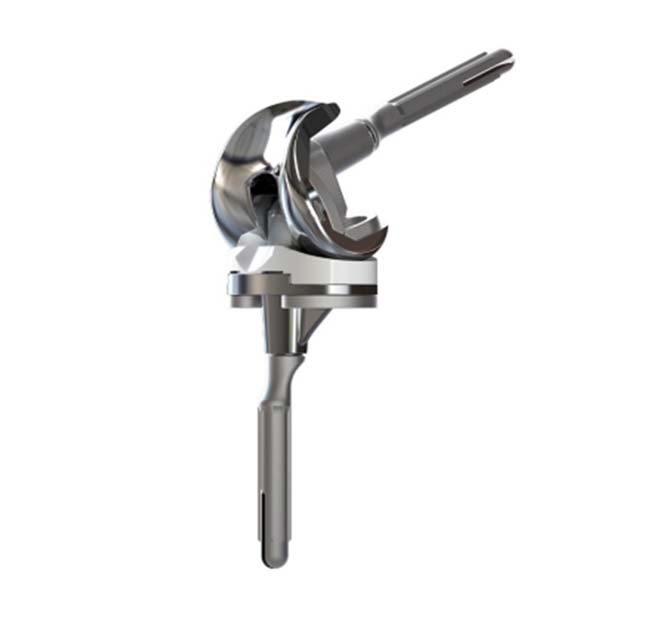How to Cope with Pain After Total Knee Surgery?
 Dec. 03, 2020
Dec. 03, 2020
With the aging of the population, the number of cases requiring knee replacement for end-stage knee disease is increasing, as well as the number of complications associated with it. While it has been reported that 95%-98% of patients have good or very good results at 10-15 years, we still see a large number of patients with low postoperative satisfaction, knee pain, or pain that persists after surgery.
The causes of pain after knee arthroplasty are numerous, and there are even many patients for whom no clear cause can be found.An intra-articular approach to the diagnosis and management of pain after knee arthroplasty.
Intra-articular factors
1. Infection
Infection after total knee arthroplasty (TKA) is a difficult complication to manage. The infection rate after primary TKA is between 0.5% and 2%, respectively. Several population-based studies have shown that infections are more likely to occur after TKA, and infection is one of the most common causes of TKA failure.
Every case of TKA presenting with pain should be suspected to be due to infection and further investigation is required until this possibility is ruled out. The management protocol for these cases should include standard laboratory screening to detect the presence of infection. We need to perform a detailed history review and physical examination, as there is often persistent pain in the knee after surgery, and there can be poor incision healing, sinus formation, fever, and joint stiffness.
Find out if the pain has persisted since the surgery or if it has gone away for a while and then reappeared. Does the pain level vary with activity level? Is there warmth or redness around the knee joint? Are there any problems such as difficulty in wound healing or fluid leakage after the initial surgery? Has the patient been previously treated with antibiotics for suspected infection and has the patient undergone any manipulation after TKA that could lead to bacteremias, such as management of dental lesions, colonoscopy, or transurethral manipulation?
Postoperative instability of TKA
Knee instability is an important cause of total knee arthroplasty (TKA) failure and is responsible for approximately 10% to 20% of TKA revisions. Knee instability is one of the most common causes of late revision in the United States and Australia. Studies have reported that knee instability is one of the most common early complications of TKA, occurring in 26% of cases in the first 5 years after surgery, second only to infection and aseptic loosening.
Knee instability can be characterized by pain, limited motion, increased deformity under weight-bearing conditions, and accelerated wear of prosthetic components. The causes are varied, but most are related to intraoperative factors such as unbalanced soft tissue, faulty osteotomies, poorly positioned prostheses, and ligament damage.
Treatment of knee instability needs to be based on an accurate diagnosis. An accurate diagnosis requires a thorough history and physical examination. Any presenting symptoms and signs also need to be carefully evaluated. For example, TKA of the CR type may present with a delayed rupture of the posterior cruciate ligament and subsequent instability of the knee in flexion.

Patellofemoral Joint Problems
Anterior knee pain is a very common complication after knee replacement, often related to the patellofemoral joint. The need for patella replacement in total knee surface arthroplasty remains controversial. Patellofemoral replacement is beneficial in reducing patellofemoral pain and improving stability on stairs, but it also increases the risk of patellofemoral complications, such as loosening and wearing of the prosthesis. Routine, non-replacement, or selective replacement of the patella is the recommended method in the literature.
Extra-articular factors
Ipsilateral hip, lumbar spine, or vascular disorders can cause knee involvement pain and should be identified by history or physical examination. Hip disorders can stimulate the medial aspect of the knee through the muscle branch of the closed-hole nerve innervating the adductor and abductor muscles, which can be understood by examining hip rotation, or by intra-articular injection to identify the source of pain. Lumbar spine disorders, especially when neurological structures at the L3/4 level are involved, can cause involvement of the knee joint, and CT/MRI studies can clarify the diagnosis. Intermittent claudication due to vascular embolism can also cause pain in the knee, and associated angiography or ultrasound can be performed to clarify the diagnosis.
The TKA Total Knee Artificial Replacement, High Flexion Hybrid Total Knee System has been tested with 10 million cycles of fatigue testing of the femoral stalk (neck) and tibial buttress and third-party testing facilities, and 5 million cycles of wear nipples with the TKR and THR systems.
Product Features.
1. inter-columns for stable function functionality.
2. Innovative locking mechanism.
3. High and wrong height.
4. Optimized Pulley Chute.
5. 360°x 3 revision, imported raw materials, effective solution for bone defects.
Refurbished Knee Replacement Implant, Knee Prosthesis, Refurbished TKA Implant, competitive prices, no minimum order requirement, can help customers test quality and market. High quality, ISO, CE certified. Skilled in delivery and export handling. Surgical skills training and workshops in China, and sending surgeons to demonstrate and support surgical procedures to distributors. If you want to get more information about good quality total knee artificial replacement system, please contact us.













